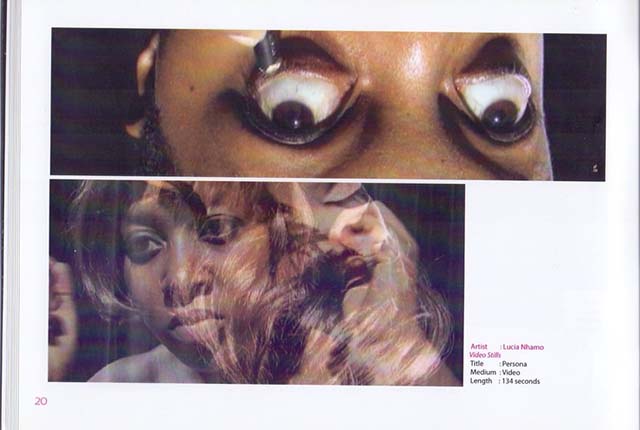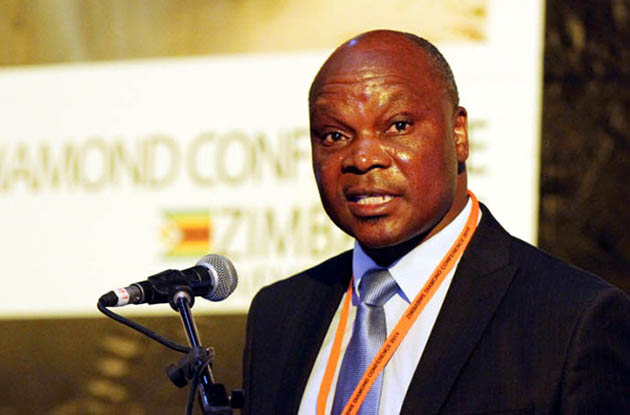Video Art: Computers extend our brains?


A still video by Lucia Nhamo titled “Persona”
Zimbabwe’s contemporary art scene has been characterised by a dynamic list of exceptional artists whose aesthetic innovation and conceptual profundity has made waves both locally and internationally.
Using sculpture and painting Zimbabwean artists like Sylvester Mubayi, Tafuma Gutsa, Gareth Nyandoro, Virginia Chihota, Mercy Moyo and many others have been able to interpret and portray Zimbabwe’s socio-economic realities, political challenges, rich traditions, and diverse beauty long before and after Independence.
However, technology has infiltrated every aspect of life be it at work, in factories, supermarkets, where almost every aspect of planning, design, marketing, production and distribution is now technologically driven. Galleries, museums and artists are far from being off the hook from the intense effects of these technological transformations. The advances in digital computer and video technology, have opened up a range of creative opportunities beyond the typical sculpting and painting media and has led to what is known as Video Art.
What is Video Art one might ask?
The genre known as video art is a relatively new form of contemporary art, and a medium of expression commonly seen in installations, but also as a stand-alone art form. Video Art is an art form which relies on moving pictures in a visual and audio medium.
According to early writers Video Art came into existence during the late 1960s and early 1970s as new consumer video technology became available outside corporate broadcasting. With the availability of digital recording equipment, many artists began to explore digital technology as a new way of expression. Video Art can take many forms: recordings that are broadcast; installations viewed in galleries or museums; works streamed online, distributed as video tapes, or DVDs; and performances which may incorporate one or more television sets, video monitors, and projections, displaying live or recorded images and sounds. At present, installation video is the most common form of Video Art, being part of the multi-media fashion for combining architecture, design, sculpture, electronic and digital art.
Latest developments include the use of the Internet and computer art to manipulate film imagery and to control videos from the worldwide Web or remote locations.
One of the key differences between Video Art and mainstream movies and theatrical cinema is that Video Art does not necessarily rely on the use of actors, it may contain no dialogue, may have no discernible narrative or plot, or adhere to any of the other conventions that generally define motion pictures as entertainment. The video artist is mainly concerned with exploring the medium itself, or using it to challenge the audience’s ideas of space, time and form.
The most important aspect of Video Art is that it is cheap and easy to make, enabling artists to record and document their performances easily. It allows creativity through using different interesting stylistic approaches to storytelling.
Video Art is also very convenient as it does not require extra transporting costs. This is because it doesn’t require much effort when carrying the video to exhibit unlike when carrying heavy sculpture or painting. With the economic hardships rocking economies globally, Video Art presents artists with an opportunity to be creative and marketable at a very minimal cost. The advent of Video Art is confronting contemporary issues such as audience consumption. The digital age has resulted in an audience who consume media products at a fast rate moving from one thing to the other at drop of every minute.
Video Art has the potential to enable local Zimbabwean artists to take advantage of the new means of dissemination and communication as a medium for cultural practice in an increasingly media-saturated world and to compete with other media products available to the audiences. Marshal McLuhan noted that technology and new media are extensions of men, that all technologies are extensions of our physical and nervous systems to increase power and speed.
“The wheel extends our feet, the phone extends our voice, television extends our eyes, radio extends our ears and the computer extends our brain”.
Thus Video Art has the ability to extend the creativity of Zimbabwean and fellow African artists and to shine the spotlight on often-ignored aspects of African artistic practice, as African art is still largely associated with painting and sculpture.









Comments